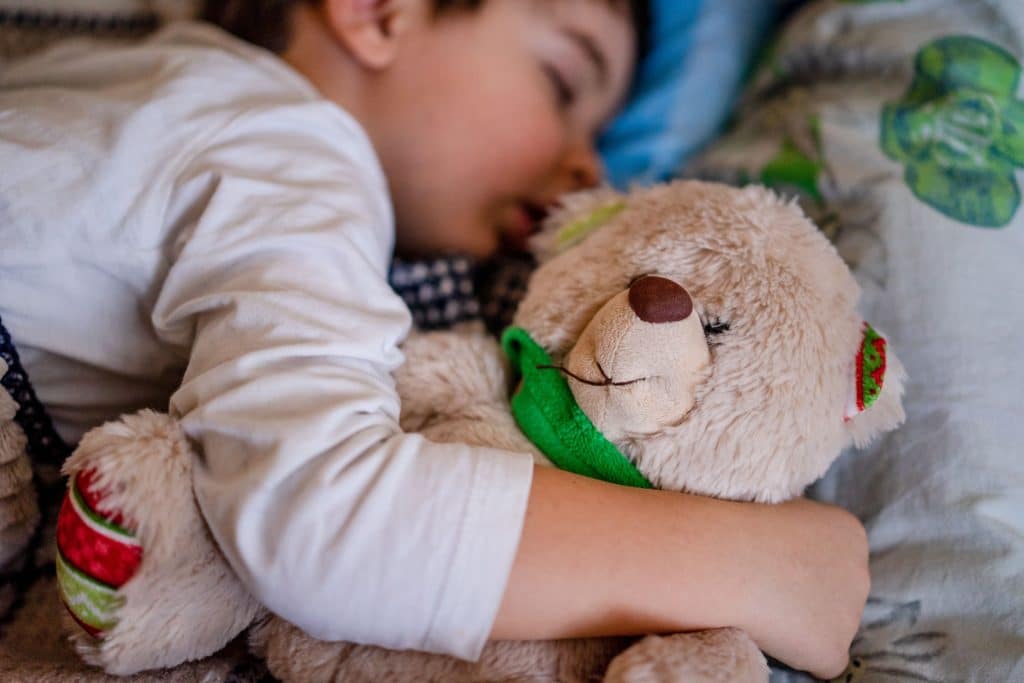Struggling with bedtime? Discover how to help your child fall asleep quickly with simple, effective strategies that ensure a peaceful night for both of you.
Key Takeaways
- Calming environment: Set the stage for sleep.
- Consistent routine: Routine signals it’s time to sleep.
- Breathing exercises: Relax and calm the mind.
- Guided imagery: Use imagination for peaceful sleep.
How can you make a kid sleep in 40 seconds? To help a child fall asleep quickly, create a calming environment, establish a consistent bedtime routine, and use relaxation techniques like deep breathing and guided imagery. These steps can help your child relax and drift off to sleep in no time.
Table of Contents
Step 1: Create a Calming Environment
Setting the stage for sleep is crucial. A calming environment helps signal to your child that it’s time to wind down. Here’s how you can create a soothing atmosphere:
- Dim the lights: Lowering the light levels in your child’s room can help trigger the production of melatonin, the sleep hormone.
- Remove distractions: Ensure the room is free from loud noises, electronic devices, and other distractions that could keep your child awake.
- Use white noise: A white noise machine can help drown out background sounds and create a consistent auditory environment conducive to sleep.
Step 2: Establish a Consistent Bedtime Routine
Kids thrive on routine. A consistent bedtime routine helps signal to your child’s brain that it’s time to sleep. Here are some steps to include:
- Bath time: A warm bath can relax your child and lower their body temperature, making them feel sleepy.
- Reading a book: Choose a calming story to read to your child. Avoid exciting or scary tales that might keep them awake.
- Gentle music: Play soft, soothing music to help your child relax.

Read more: 10 Funny Bedtime Stories to Make Your Kids Laugh Before Sleep
Step 3: Practice Deep Breathing Exercises
Deep breathing can help calm an overactive mind and relax the body. Here’s a simple exercise you can do with your child:
- Have your child lie down comfortably in bed.
- Instruct them to take a deep breath in through their nose for a count of four.
- Hold the breath for a count of four.
- Exhale slowly through the mouth for a count of four.
- Repeat this process a few times, encouraging your child to focus on their breath.
Step 4: Use a Comfort Object
A favorite stuffed animal or blanket can provide a sense of security and comfort to your child. This can be particularly helpful for neurodivergent kids who might need extra reassurance.
- Choose a soft, cuddly object that your child loves.
- Ensure it’s something they associate with safety and relaxation.
Step 5: Implement a Visual Schedule
For some kids, especially those with learning disabilities, a visual schedule can be incredibly helpful. This shows them what to expect and reduces anxiety around bedtime.
- Create a simple chart with pictures representing each step of the bedtime routine.
- Hang it where your child can see it easily.
- Encourage your child to follow the steps on the chart each night.
Step 6: Try Progressive Muscle Relaxation
Progressive muscle relaxation is a technique that can help your child release tension and prepare for sleep. Here’s how to do it:
- Starting at their toes, have your child tense their muscles for a count of five, then relax.
- Move up to the legs, abdomen, arms, and finally the face, tensing and relaxing each muscle group.
- Encourage your child to notice the difference between tension and relaxation.

Read more: ADHD Sleep Problems in Kids
Step 7: Use Guided Imagery
Guided imagery involves using your child’s imagination to create a peaceful scene in their mind. This can help distract them from worries and relax into sleep.
- Ask your child to close their eyes and imagine a favorite place, like a beach or a forest.
- Describe the scene in detail, using all five senses.
- Encourage your child to focus on this image as they drift off to sleep.
Step 8: Avoid Stimulants Before Bed
Ensuring your child avoids stimulants in the evening can make a big difference. Here’s what to watch out for:
- Avoid caffeine: Ensure your child doesn’t consume caffeinated drinks like soda or chocolate close to bedtime.
- Limit sugar: High sugar intake can lead to increased energy levels, making it harder for your child to fall asleep.
Step 9: Maintain a Cool Room Temperature
Keeping the room cool can help your child fall asleep faster. Aim for a temperature between 60-67°F (15-19°C). This range is considered optimal for sleep.
- Use a fan or air conditioner to regulate the room temperature.
- Ensure your child’s bedding is appropriate for the season to avoid overheating or getting too cold.
Step 10: Be Patient and Consistent
Consistency is key. It might take some time for your child to adjust to a new bedtime routine, so be patient and stick with it. Here are some tips:
- Stick to the same routine every night.
- Be patient and understanding if your child struggles to adjust at first.
- Reward progress with positive reinforcement and encouragement.
Goally | Apps To Support Child Development
Looking for fun ways to help your child learn life skills? Try Goally! The Goally tablet comes with award-winning learning apps and video classes to help kids develop the skills they need to become independent with FUN & evidence-based practices.

Our apps teach executive function, language, emotional regulation, finger dexterity skills, and more.
As your child develops new skills, you can increase the difficulty level of the tasks in the app to challenge and motivate them even further. This helps your child grow and progress at their own pace, while also keeping them engaged and excited about their development.

Helping your child fall asleep quickly can transform your evenings and ensure they get the rest they need. By creating a calming environment, establishing a consistent bedtime routine, and using techniques like deep breathing and guided imagery, you can make bedtime a peaceful and enjoyable experience for both you and your child. Remember, patience and consistency are key, and with time, your child will learn to fall asleep easily and quickly.
Resources:
FAQs About How to Put a Kid to Sleep in 40 Seconds
How can I help my child fall asleep quickly? Create a calming bedtime routine, establish a consistent sleep schedule, and create a comfortable sleep environment.
What are some relaxation techniques that can help my child sleep? Deep breathing exercises, guided imagery, and progressive muscle relaxation can help your child relax and fall asleep faster.
Should I limit screen time before bedtime? Yes, it's recommended to avoid electronic devices at least an hour before bedtime as the blue light can interfere with sleep.
What are some comforting bedtime rituals I can incorporate? Bedtime stories, cuddling, and gentle lullabies can create a soothing and comforting atmosphere before sleep.
How can I establish a sense of structure for bedtime? Incorporate visual cues like a countdown timer or a gentle alarm clock to help your child understand when it's time to sleep.
This post was originally published on 04/23/2023. It was updated on 08/27/2024.
Emily is a seasoned blog writer for Goally, leveraging her extensive background in child psychology and special education to provide valuable insights and resources for parents. Her commitment to understanding and addressing the unique needs of these children, combined with her expertise in educational strategies, makes her a credible and empathetic voice for families.





